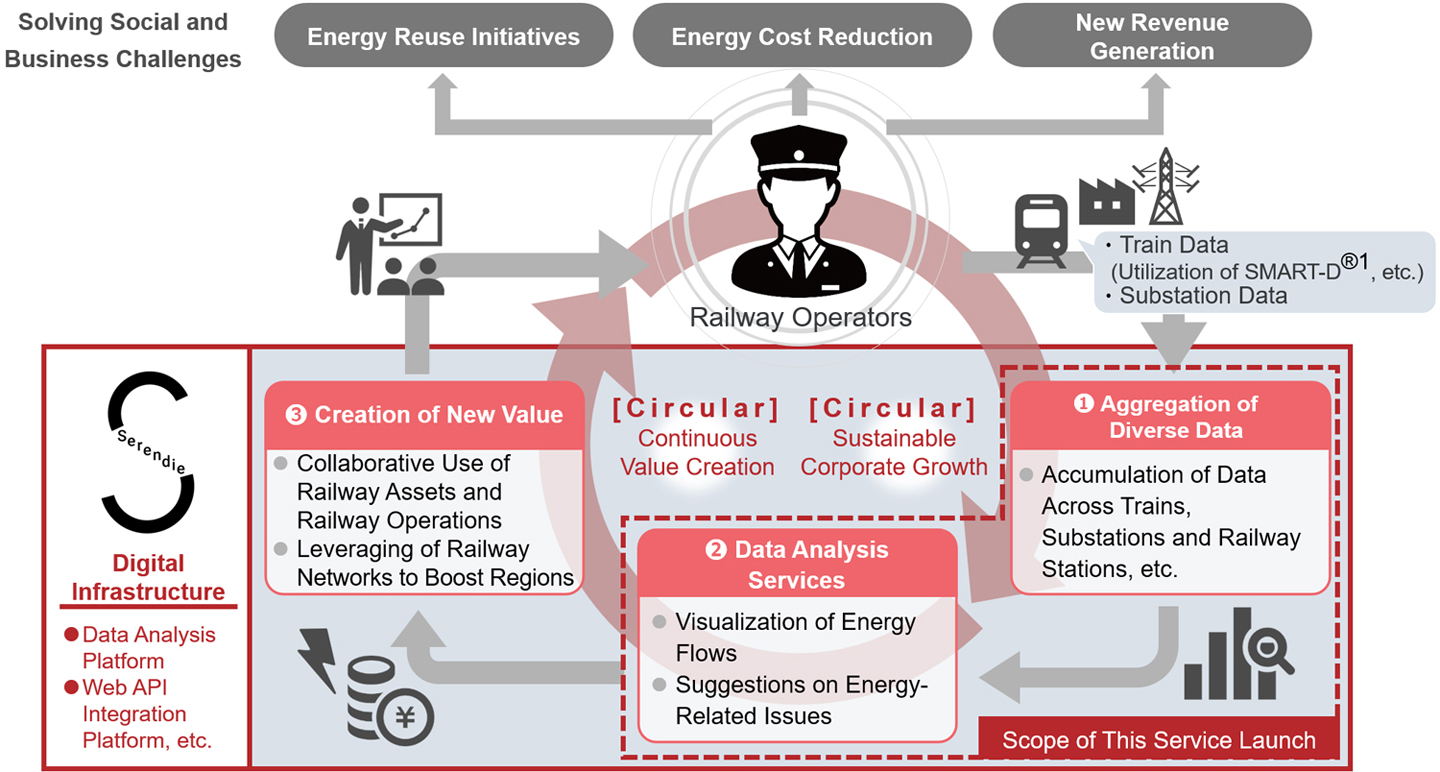News
Note that the releases are accurate at the time of publication but may be subject to change without notice. This page shows only the most recent items. For the full archive of press releases please click "Search by category or year."
Mitsubishi Electric Launches Railway Data Analysis Service Utilizing Serendie Digital Platform

"Data Analysis Service for Railways" System Diagram
TOKYO, July 11, 2024 - Mitsubishi Electric Corporation (TOKYO: 6503) announced today that it has launched a railway data analysis service utilizing Serendie™2, its digital platform for the optimal use of energy and the optimal deployment and operation of railway assets by railway companies. The new service is available for immediate use.
In the railway industry, various measures aiming at the realization of carbon neutrality and decarbonization are being implemented. These include the use of renewable energy such as photovoltaic (PV) power generation by railway operators and the introduction of environmentally friendly train equipment. To further accelerate these efforts, it is necessary to optimize overall energy usage by coordinating the use of railway assets at substations and stations among train operators, utilizing railway-related operational data, including operational information.
Mitsubishi Electric's new railway data analysis service makes use of its Serendie digital platform, which collects and analyzes data such as the power consumption of trains, substations and stations, as well as the operational status of trains. This is used to identify potential issues railway operators might face when aiming at decarbonization and to propose optimal solutions and utilization methods. For example, the service will propose appropriate locations for Station Energy Savings Inverters (S-EIV®3) and the optimal operation of railway assets, taking into account station congestion levels, operating schedules, and operating conditions. Its proposals are based on the visualization of the surplus power generated during the braking of train (surplus regenerative power).
Using these proposals, Mitsubishi Electric will help railway operators introduce the equipment they require to ensure optimal power consumption and the energy-saving operation of trains, contributing to the optimization of their energy usage through collaboration in the use of railway assets. Furthermore, by analyzing and utilizing the data collected during railway operation and facilitating the coordination of railway power systems with the availability of power systems in areas along railway lines, the company will help realize optimal energy supplies and thereby promote decarbonization.
- 1
A device that is installed on existing railway vehicles to collect various data from the Train Control Management System (TCMS). SMART-D is an abbreviation for Small Monitor Analyze Record Terminal-Depot
- 2
A digital platform to facilitate co-creation initiatives aimed at accelerating the company's transformation into a "Circular Digital-Engineering Company." Serendie is a portmanteau of "serendipity" and "digital engineering."
- 3
A device that directly supplies surplus power, which cannot be consumed by trains running nearby, from the regenerative power generated during braking to the electrical facilities of the station. S-EIV is an abbreviation for Station Energy Saving Inverter
